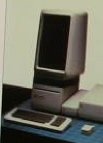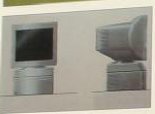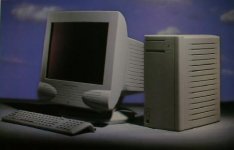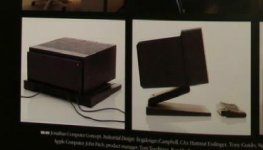barana
Banned
G'day just wanted to write this one down so in at least writing it down gives me an outlet.
I've a project. its a modern retro interpretation of the g4 cube. It will be in snow white-painted with planinum, and as if apple turned back the clock on the g4 cube
The mobo will be a 68000. Probably a Mac classic.I like limiting the game to a 68000+i have a rarely worked on game port that i would use this machine with When its done
I would Install a 68000/68010 accelerator in it - a salivating possibility would be the 50mhz 68000 'zeus68k'

http://awesome.commodore.me/zeus68k/
I would use this as a monitor

It's an apple twopage display, Its grayscale, 16 grays according to apple
I believe it has a display card for a classic/SE
I would use an original square adb mouse

and the keyboard? a IIGS keyboard, still to me the most stylish ADB KB out

the os would be an easy 6.0.8, hands down, with 7.0.1 as a standby for 7 only apps.
the cube would be the most fun
I would either start off with the g4 cube, and reskin it with the plastic and do(yes just do, no other way to describe it) snow white on it - using a 3d scan and modify with a 3d program and print out with a reprap, or something along the lines of a malleable, settable product, bog,kneed-it etc and conventional tools like sanders and routers.
or make up a custom Job using same/similar methods with a custom size but still with a close resemblance to the cube.
there would be 2 media drives up top, a superdrive floppy, and - a slot loading cdrom (burner if I could find one) - I have found an old scsi 1 slotloading pioneer cdrom online, that may work well. its 16x iirc.
The HDD would certainly be a scsi to cf adaptor with a 4GB card. 30mb boot, 2 gb storage partition and other partitions such as prodos and some spare space I can play with.
If you want to shoot me down I wont stop you, I'm not saying this to prove or convince. just using it as a digital diary. anyone who share a common interest gets to see.Bonus for them.
more to follow.
I've a project. its a modern retro interpretation of the g4 cube. It will be in snow white-painted with planinum, and as if apple turned back the clock on the g4 cube
The mobo will be a 68000. Probably a Mac classic.I like limiting the game to a 68000+i have a rarely worked on game port that i would use this machine with When its done
I would Install a 68000/68010 accelerator in it - a salivating possibility would be the 50mhz 68000 'zeus68k'

http://awesome.commodore.me/zeus68k/
I would use this as a monitor

It's an apple twopage display, Its grayscale, 16 grays according to apple
I believe it has a display card for a classic/SE
I would use an original square adb mouse

and the keyboard? a IIGS keyboard, still to me the most stylish ADB KB out

the os would be an easy 6.0.8, hands down, with 7.0.1 as a standby for 7 only apps.
the cube would be the most fun
I would either start off with the g4 cube, and reskin it with the plastic and do(yes just do, no other way to describe it) snow white on it - using a 3d scan and modify with a 3d program and print out with a reprap, or something along the lines of a malleable, settable product, bog,kneed-it etc and conventional tools like sanders and routers.
or make up a custom Job using same/similar methods with a custom size but still with a close resemblance to the cube.
there would be 2 media drives up top, a superdrive floppy, and - a slot loading cdrom (burner if I could find one) - I have found an old scsi 1 slotloading pioneer cdrom online, that may work well. its 16x iirc.
The HDD would certainly be a scsi to cf adaptor with a 4GB card. 30mb boot, 2 gb storage partition and other partitions such as prodos and some spare space I can play with.
If you want to shoot me down I wont stop you, I'm not saying this to prove or convince. just using it as a digital diary. anyone who share a common interest gets to see.Bonus for them.
more to follow.






